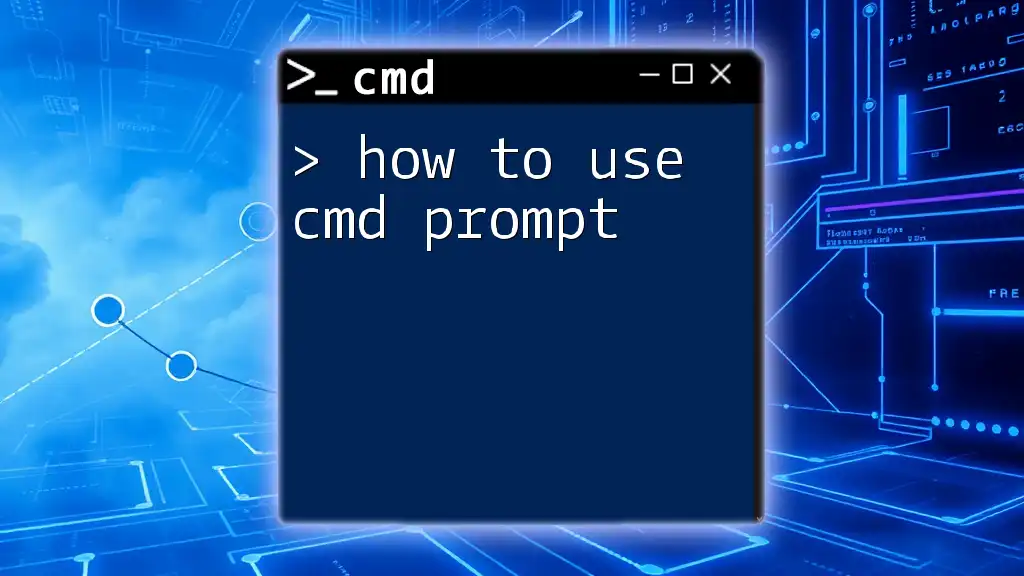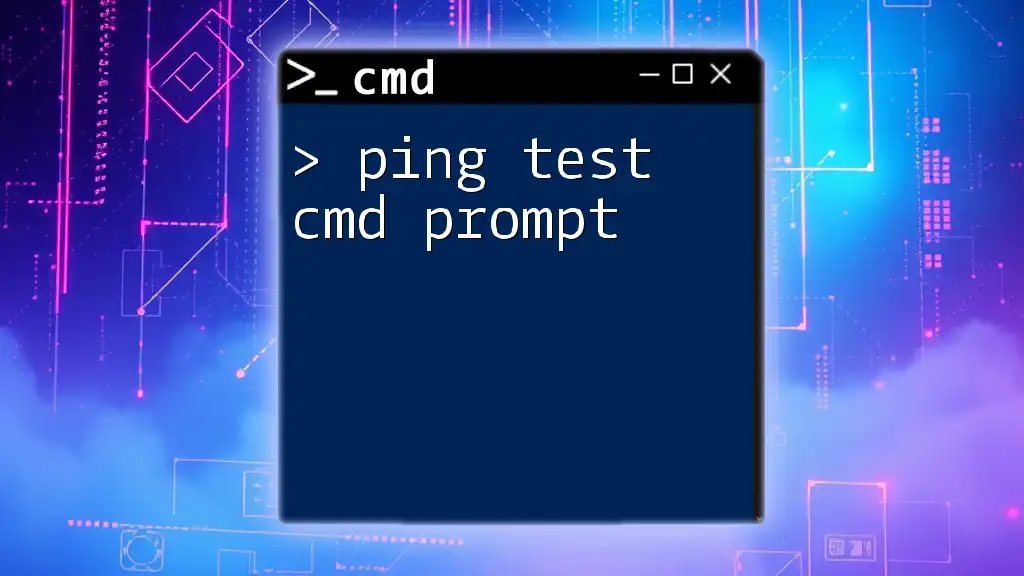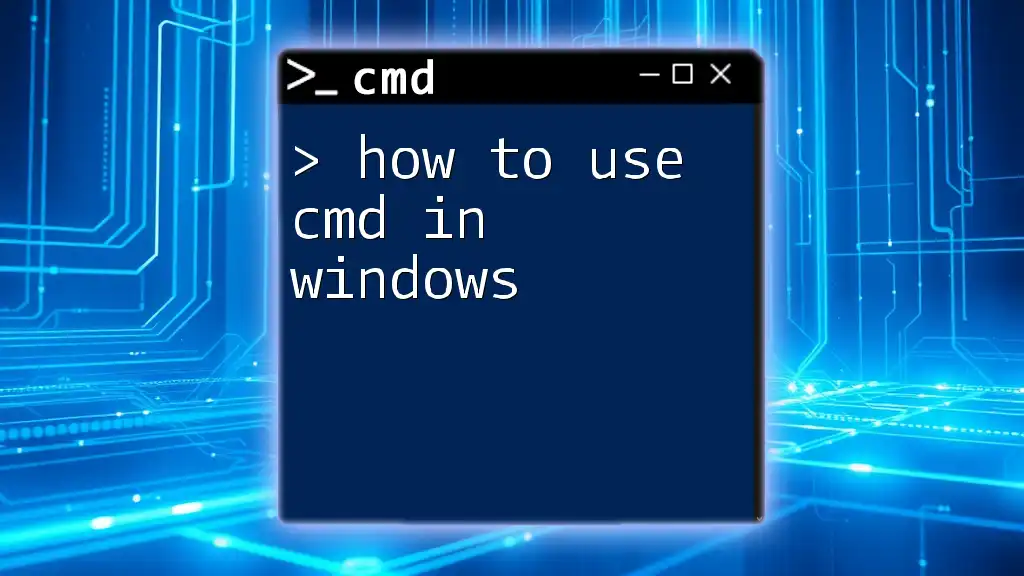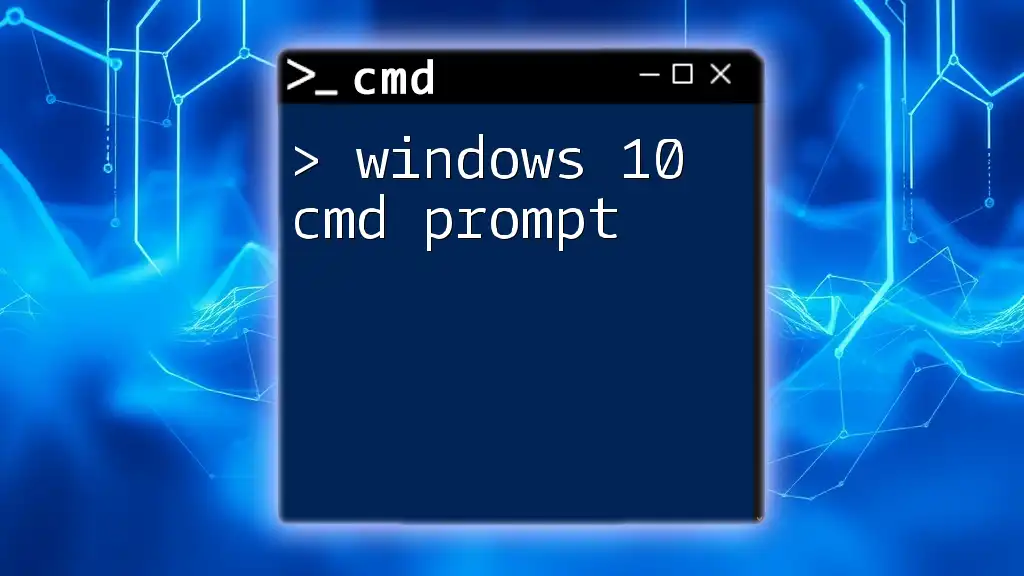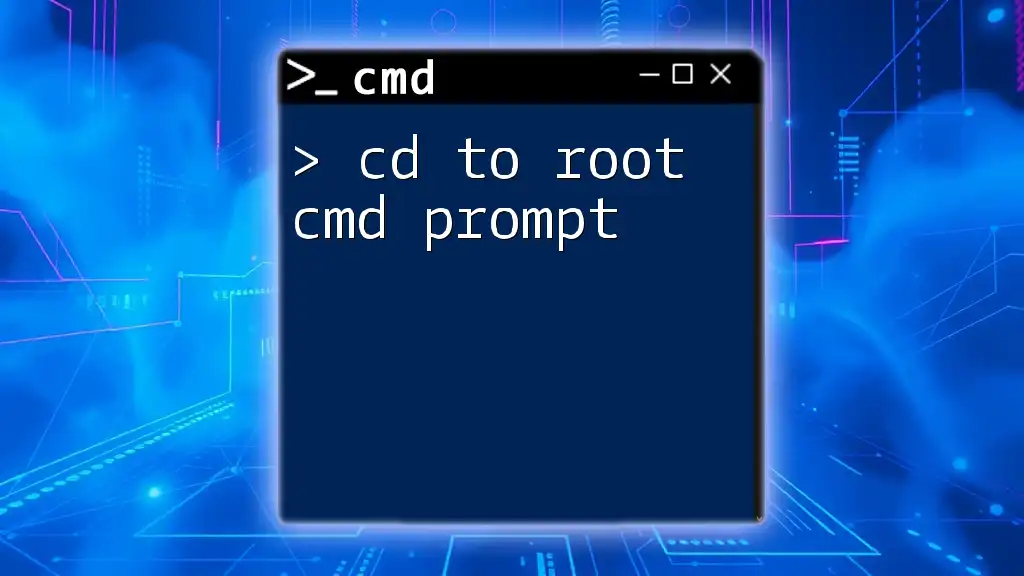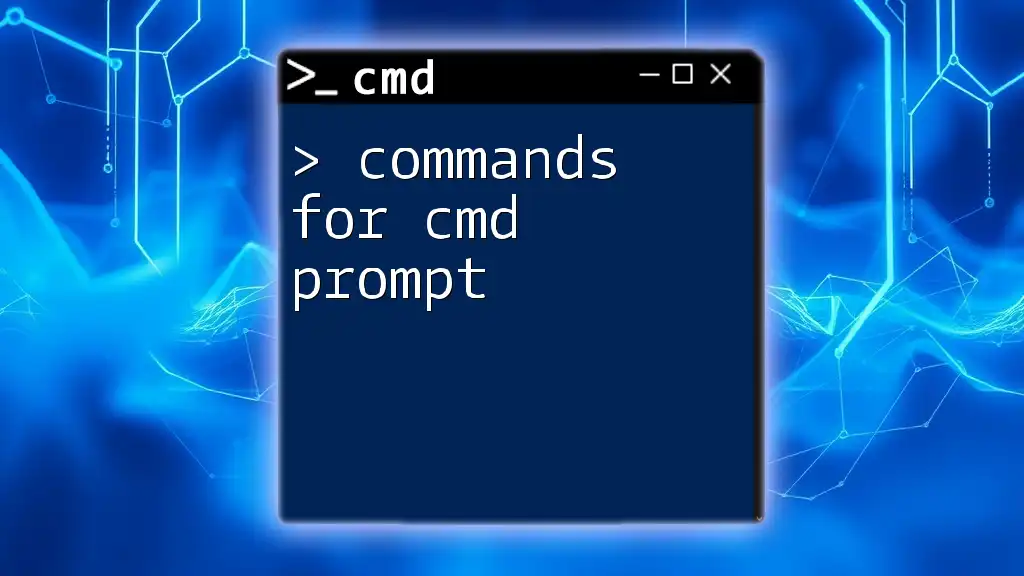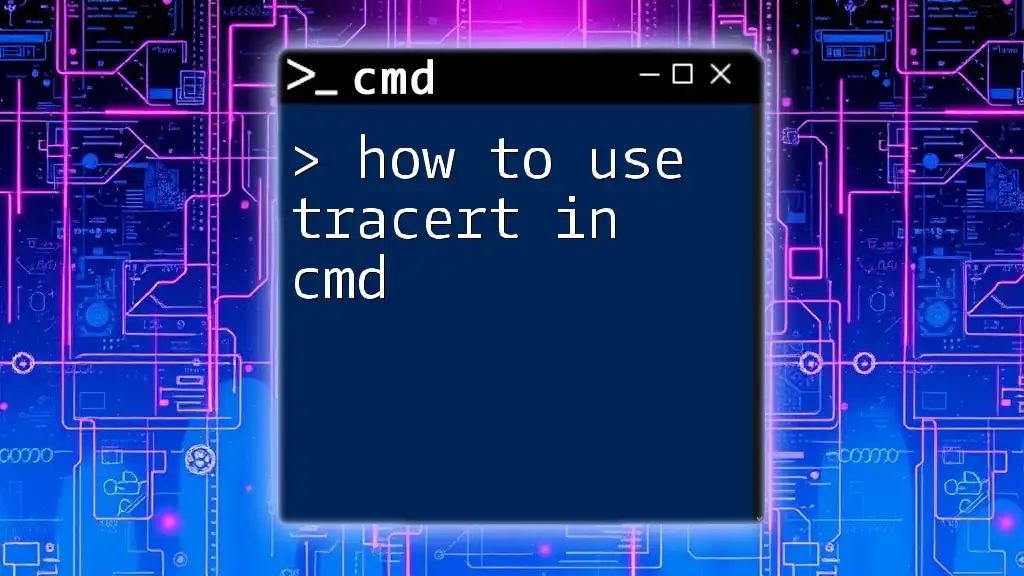To effectively navigate and execute commands in the Command Prompt (cmd), you can use simple commands like `dir` to list directory contents.
dir
What is CMD?
CMD, or Command Prompt, is a command-line interpreter application available in most Windows operating systems. It allows users to execute commands, perform system diagnostics, manage files, and automate tasks through scripting. CMD has a rich history dating back to DOS (Disk Operating System) and remains an essential tool for both casual users and developers to execute tasks quickly and efficiently.
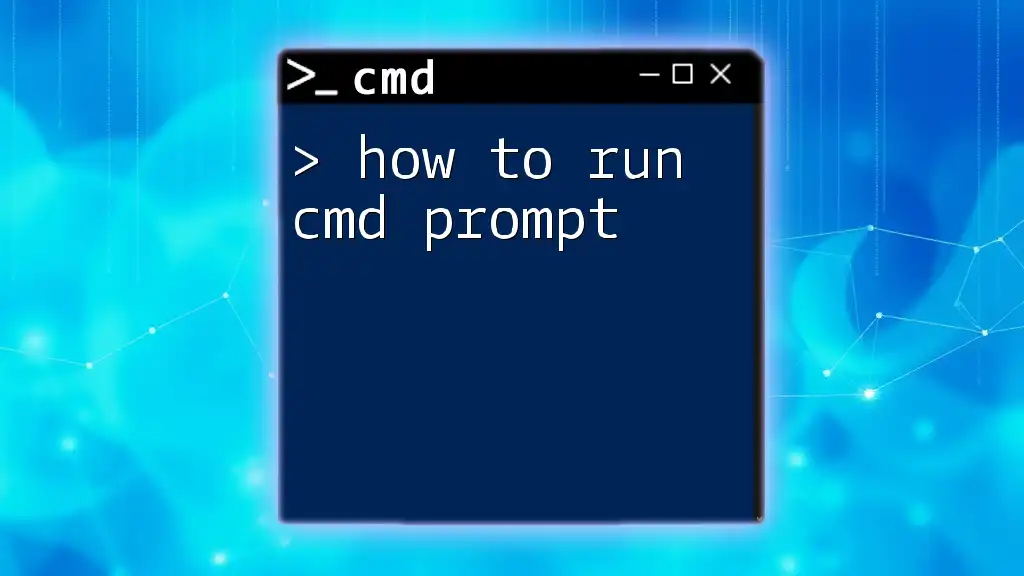
Getting Started with CMD
How to Access CMD Prompt
Accessing the CMD Prompt is simple and can be achieved using various methods:
-
Using the Start Menu: Click on the Start menu (Windows icon) or press the Windows key, type "Command Prompt", and select it from the results.
-
Using Run Dialog (Win + R): Press `Win + R`, type "cmd", and hit Enter.
-
Creating a Shortcut: Right-click on the desktop, select New > Shortcut, type "cmd", and click Next. Name it anything you want, like "Command Prompt".
Interface Overview
When you open CMD, you'll see a black window with a blinking cursor. This is the interface you'll be interacting with. The prompt usually ends with a greater than (`>`) symbol and reflects the current directory path. For instance, `C:\Users\Username>` shows you’re in the User folder. You simply type your commands after this prompt.
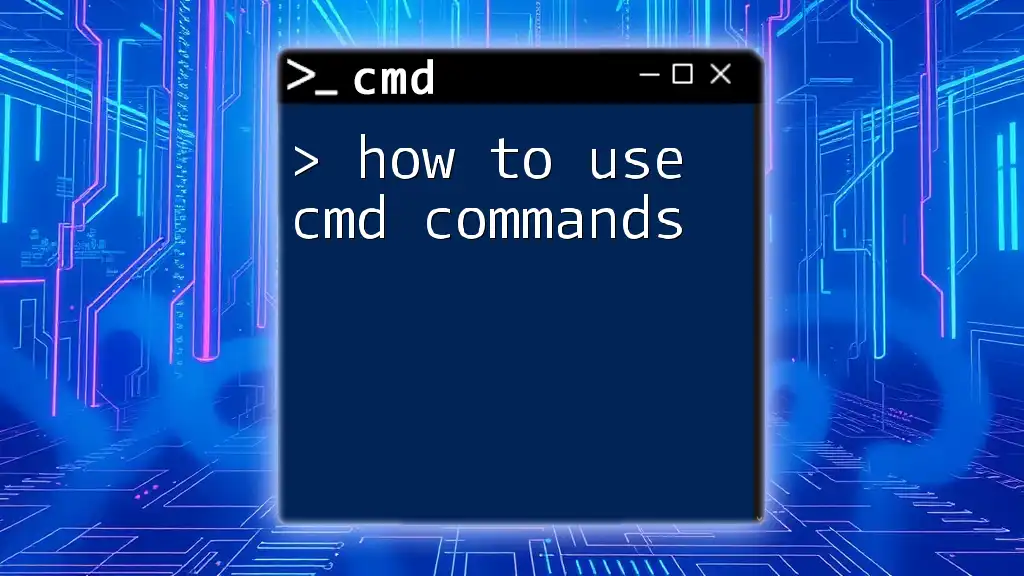
Basic CMD Commands
Understanding CMD Syntax
All commands in the CMD follow a specific syntax:
command [parameter] [/switch]
- command: The command you want to execute (like `dir`).
- parameter: Additional information for the command (like the directory you want to display).
- /switch: Optional flags or switches that modify the command's behavior.
Commonly Used Commands
Navigating Directories
-
cd (Change Directory): This command lets you change the directory you’re currently working in. To move to the Documents directory, type:
cd Documents -
dir (Directory): Use this command to list the contents of the current directory. Simply type:
dir
File Operations
-
copy: This command copies files from one location to another. To copy `file.txt` to a new file called `backup.txt`, you would type:
copy file.txt backup.txt -
move: Use this command to relocate a file to another directory. For instance, to move `file.txt` to the `D:\Backup\` directory, type:
move file.txt D:\Backup\ -
del (Delete): To delete a file, use the del command. If you want to delete `oldfile.txt`, simply type:
del oldfile.txt
Using Help Commands
Understanding CMD commands can be overwhelming, but you have some built-in help tools at your disposal:
-
help: This command shows a list of available commands along with a short description. You can simply enter:
help -
command /?: If you want details about a specific command, you can type the command followed by `/?.` For example, to learn more about the `copy` command, type:
copy /?
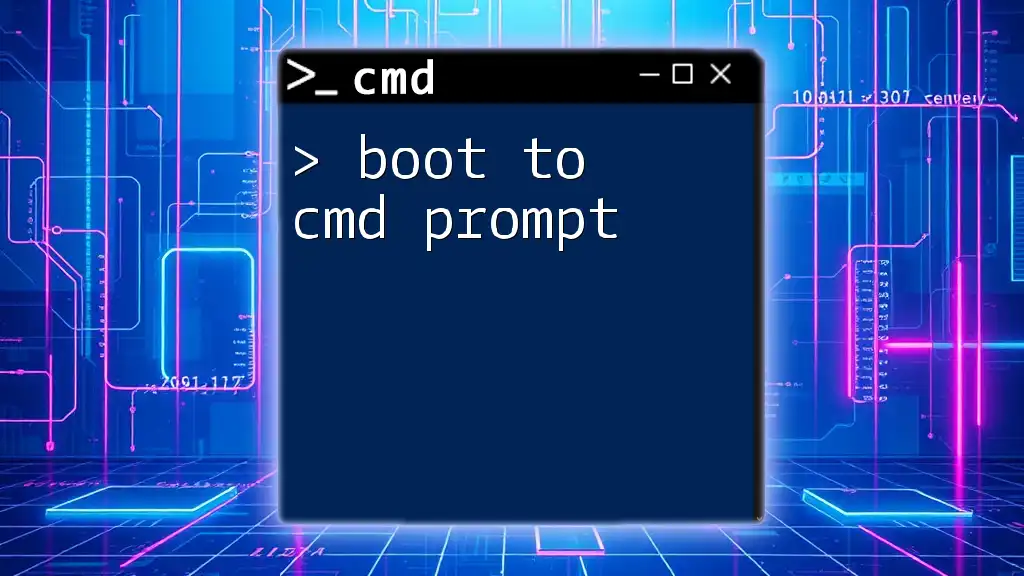
Advanced CMD Techniques
Batch Files and Scripting
Batch files are essential for automating tasks in CMD. They are simply text files with a `.bat` extension that contain a series of commands.
The basic structure of a batch file includes the following:
@echo off
echo Hello World!
pause
To create a batch file, open Notepad, type in your commands, and save it as `script.bat`. When you double-click this file, the commands will execute in succession.
Redirecting Input and Output
CMD allows you to redirect input and output, which is a powerful feature for managing data:
-
Redirecting Output: You can send command results to a text file using the `>` operator. For example, to save the directory listing to a file called `output.txt`, you would use:
dir > output.txt -
Appending Output: To add new entries to an existing file, use the `>>` operator. For example:
echo New entry >> output.txt
Environment Variables
Environment variables are special variables that provide information about your system. To view them, use the `set` command:
set
To change or set a new environment variable, the syntax is:
set VARIABLE_NAME=value
For example:
set MYVAR=HelloWorld
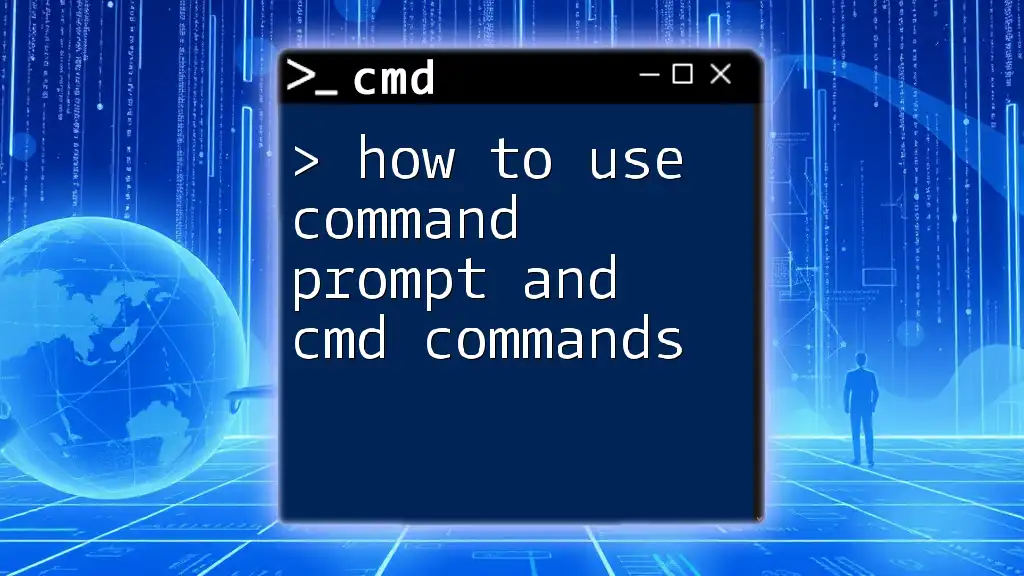
Troubleshooting CMD
Common Issues and Solutions
In your CMD journey, you may encounter various issues. Here are some common problems and their solutions:
-
CMD not recognizing command: This can happen if the command wasn’t typed correctly. Double-check spelling and syntax.
-
Command execution errors: If you see errors like “file not found,” confirm that the file exists in the specified location.
Using CMD for System Diagnostics
CMD is also handy for diagnosing system issues. Here are a couple of useful commands:
-
ping: This command tests network connectivity. To check if Google is reachable, type:
ping google.com -
ipconfig: Use this command to display IP address configurations for your network adapters. Type:
ipconfig /all
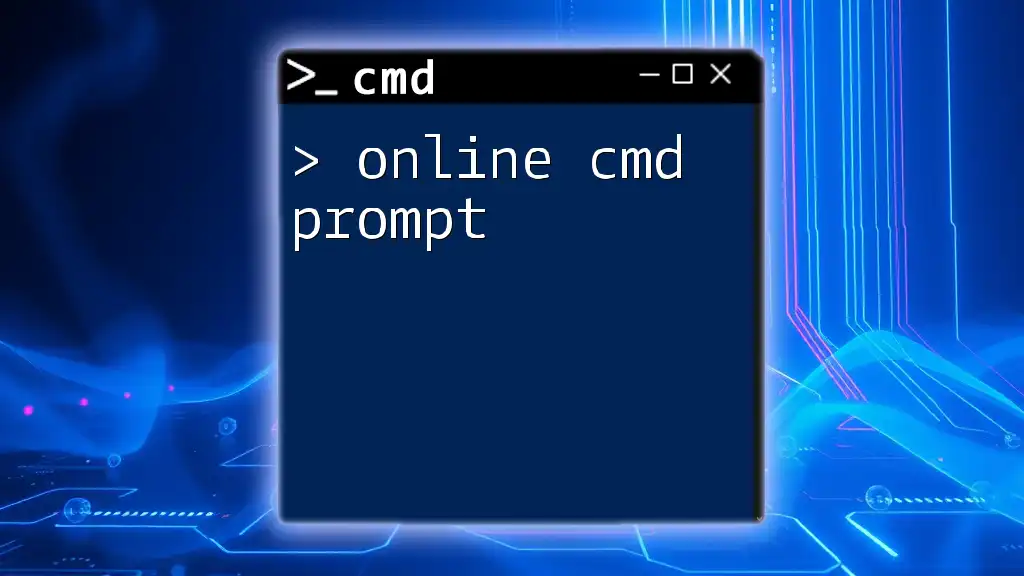
CMD Tips and Tricks
Customizing CMD
You can personalize your CMD environment to enhance your experience. Change the background and text colors by right-clicking the title bar of the CMD window, selecting Properties, and navigating to the Colors tab. Adjust the settings to suit your preferences.
Useful Resources
To continue enhancing your CMD skills, consider exploring the following:
- Online forums and communities dedicated to CMD
- Comprehensive guides available on tech websites
- Books focused on Windows command line and scripting
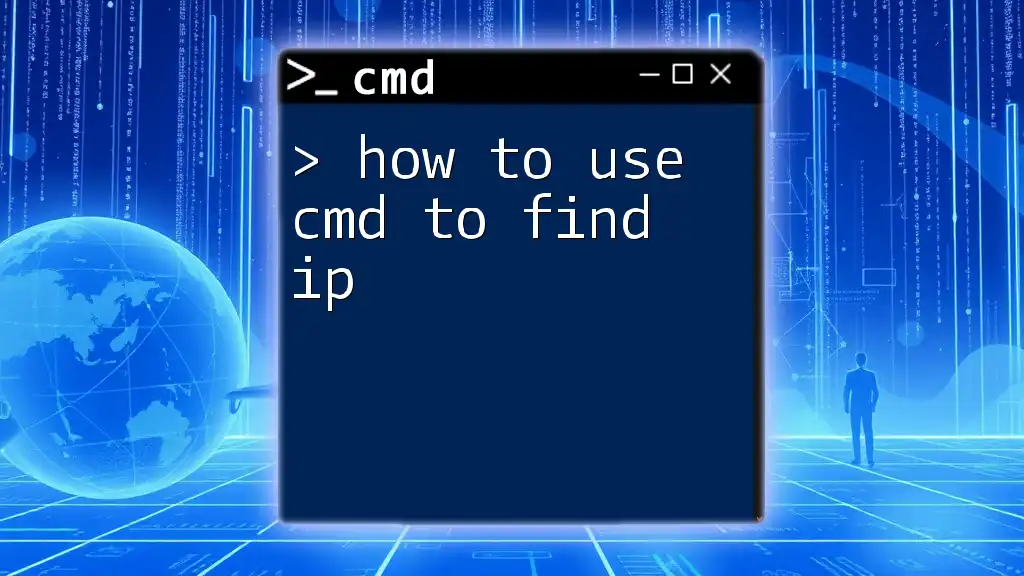
Conclusion
Understanding how to use CMD Prompt is invaluable for anyone looking to enhance their computing efficiency. By mastering basic commands, file operations, and environment variables, you can manipulate your system in ways that graphical interfaces cannot.
Practice regularly to solidify your skills. The more you use CMD, the more comfortable you will become. Explore advanced topics, and consider creating batch files for automating repetitive tasks.
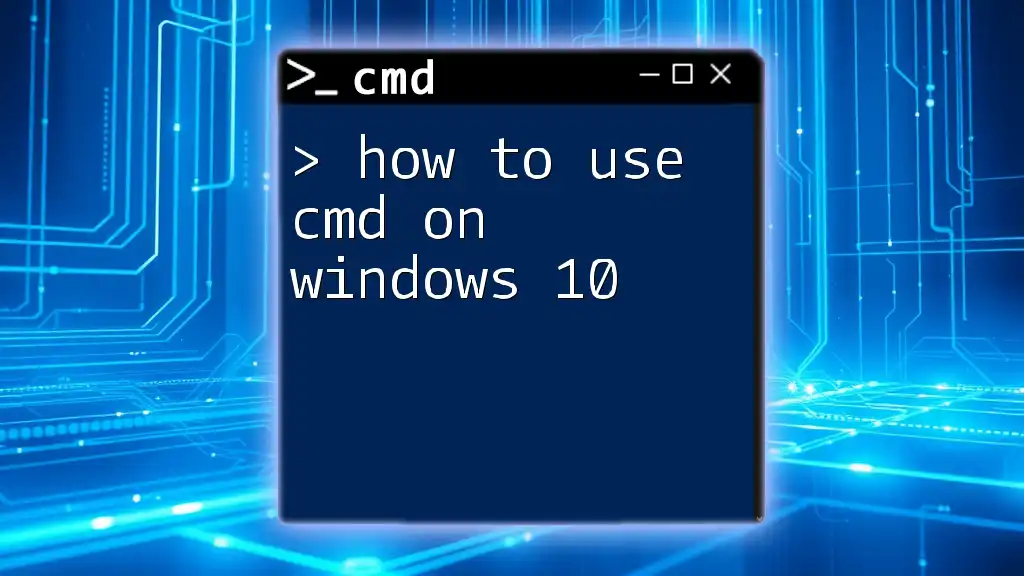
Call to Action
If you found this guide helpful, subscribe for more insights on CMD and share your experiences or questions in the comments section below! Let’s explore the world of command line together!

